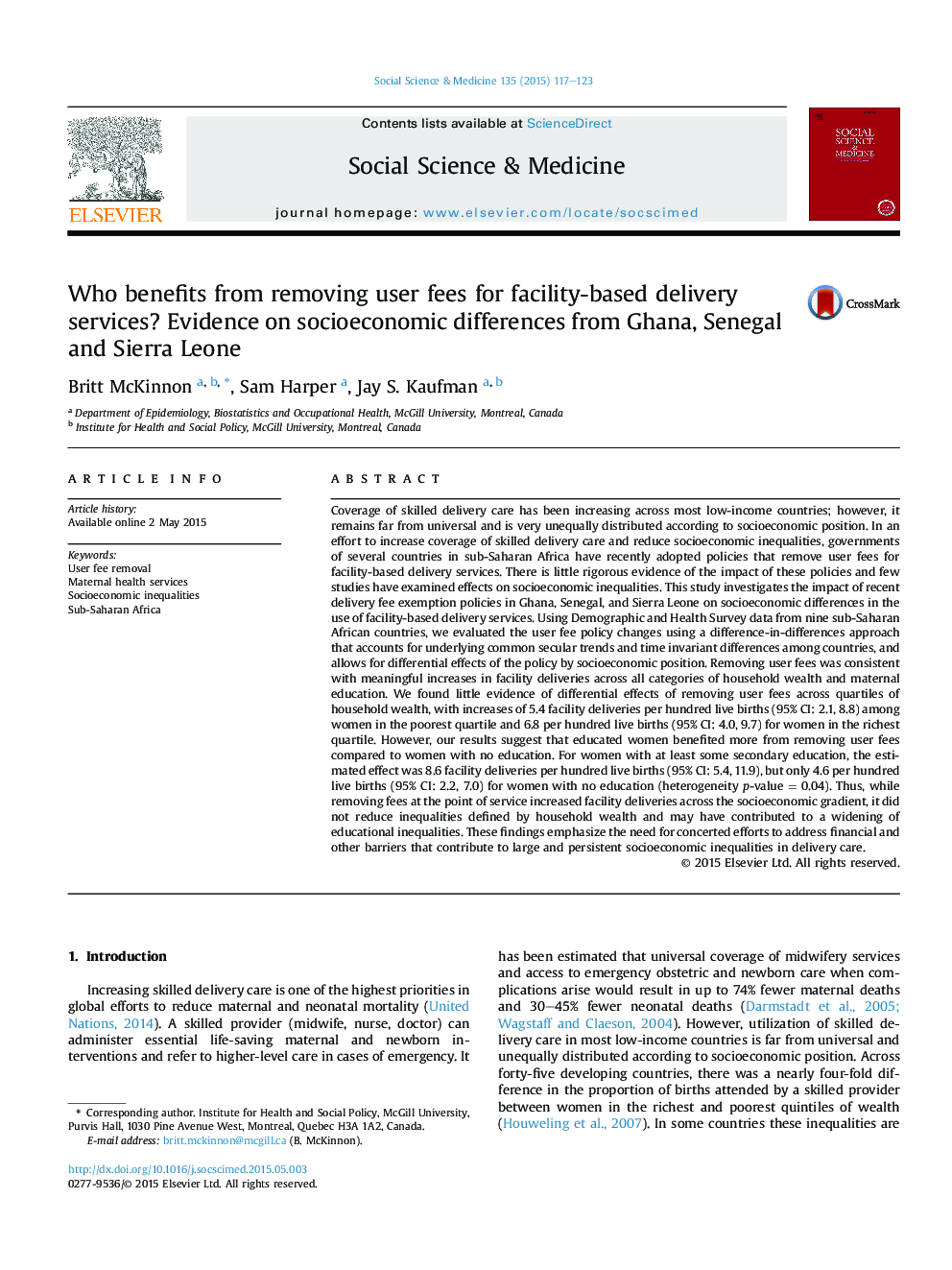| کد مقاله | کد نشریه | سال انتشار | مقاله انگلیسی | نسخه تمام متن |
|---|---|---|---|---|
| 7332357 | 1476033 | 2015 | 7 صفحه PDF | دانلود رایگان |
عنوان انگلیسی مقاله ISI
Who benefits from removing user fees for facility-based delivery services? Evidence on socioeconomic differences from Ghana, Senegal and Sierra Leone
ترجمه فارسی عنوان
چه کسی از حذف هزینه های کاربر برای خدمات تحویل مبتنی بر امکانات بهره مند است؟ شواهد بر تفاوت های اجتماعی و اقتصادی از غنا، سنگال و سیرالئون
دانلود مقاله + سفارش ترجمه
دانلود مقاله ISI انگلیسی
رایگان برای ایرانیان
کلمات کلیدی
حذف هزینه کاربر خدمات بهداشتی مادران، نابرابری اجتماعی جنوب صحرای آفریقا،
موضوعات مرتبط
علوم پزشکی و سلامت
پزشکی و دندانپزشکی
سیاست های بهداشت و سلامت عمومی
چکیده انگلیسی
Coverage of skilled delivery care has been increasing across most low-income countries; however, it remains far from universal and is very unequally distributed according to socioeconomic position. In an effort to increase coverage of skilled delivery care and reduce socioeconomic inequalities, governments of several countries in sub-Saharan Africa have recently adopted policies that remove user fees for facility-based delivery services. There is little rigorous evidence of the impact of these policies and few studies have examined effects on socioeconomic inequalities. This study investigates the impact of recent delivery fee exemption policies in Ghana, Senegal, and Sierra Leone on socioeconomic differences in the use of facility-based delivery services. Using Demographic and Health Survey data from nine sub-Saharan African countries, we evaluated the user fee policy changes using a difference-in-differences approach that accounts for underlying common secular trends and time invariant differences among countries, and allows for differential effects of the policy by socioeconomic position. Removing user fees was consistent with meaningful increases in facility deliveries across all categories of household wealth and maternal education. We found little evidence of differential effects of removing user fees across quartiles of household wealth, with increases of 5.4 facility deliveries per hundred live births (95% CI: 2.1, 8.8) among women in the poorest quartile and 6.8 per hundred live births (95% CI: 4.0, 9.7) for women in the richest quartile. However, our results suggest that educated women benefited more from removing user fees compared to women with no education. For women with at least some secondary education, the estimated effect was 8.6 facility deliveries per hundred live births (95% CI: 5.4, 11.9), but only 4.6 per hundred live births (95% CI: 2.2, 7.0) for women with no education (heterogeneity p-value = 0.04). Thus, while removing fees at the point of service increased facility deliveries across the socioeconomic gradient, it did not reduce inequalities defined by household wealth and may have contributed to a widening of educational inequalities. These findings emphasize the need for concerted efforts to address financial and other barriers that contribute to large and persistent socioeconomic inequalities in delivery care.
ناشر
Database: Elsevier - ScienceDirect (ساینس دایرکت)
Journal: Social Science & Medicine - Volume 135, June 2015, Pages 117-123
Journal: Social Science & Medicine - Volume 135, June 2015, Pages 117-123
نویسندگان
Britt McKinnon, Sam Harper, Jay S. Kaufman,
